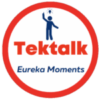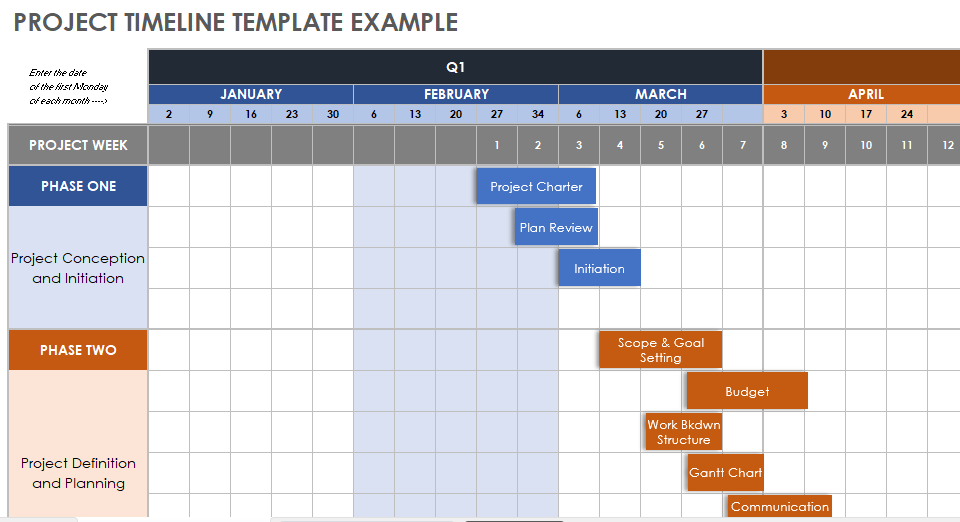
Create an amazing Project Kickoff Deck
Steps to consider to create a Project Kickoff deck
Project Kickoff
One of the most important meetings in the overall project management scope is the Project Kickoff meeting. Ideally, there are two types of kickoff meetings – Internal and Customer.
The internal project kickoff meeting aligns all the project team members with the overall project goals, and discussions that are private to the organization. Many of these elements are shared with the customer, however the internal working of the project is always kept confined to the group and is confidential.
A project manager prepares a Kickoff deck which has the following explained in detail:
Introduction and Welcome
Project kick-off meetings should actively involve the team and anyone else who’s a stakeholder or whose work will be affected by the project
The introduction and welcome segment of a project kickoff meeting serve as the gateway to setting a positive and inclusive atmosphere. It involves introducing key stakeholders, team members, and any other attendees to one another. This establishes a sense of camaraderie and teamwork from the outset. A warm welcome helps to alleviate any apprehensions or tensions that may exist among team members, fostering an environment conducive to collaboration and open communication. This segment sets the tone for the meeting, emphasizing the importance of each individual’s contribution to the project’s success and fostering a sense of belonging within the team.
Pre-Requisites for a Kickoff Meeting
Preparing for a kickoff meeting means that there are some pre-requisite documents in place which can be referenced to during the course of the meeting. They are
- High Level Project Plan
- Project Charter
- RACI Chart
- Statement of Work (SOW)
Project Overview
Embark on a journey of purpose and possibility as you outline the objectives, scope, and anticipated outcomes of your transformative project
Providing a comprehensive overview of the project is essential for ensuring that all participants have a clear understanding of its purpose, scope, and objectives. This involves articulating the project’s goals, desired outcomes, and the problem it aims to solve or the opportunity it seeks to capitalize on.
By presenting the project’s scope, stakeholders gain insight into what will be included within the project boundaries and what will not, helping to manage expectations and prevent scope creep. Additionally, outlining the expected deliverables sets a clear benchmark for success and provides a roadmap for the project’s progression, ensuring alignment among team members and stakeholders.
Scope and Deliverables
Charting a course towards success, you define the boundaries and aspirations that will guide the project's path to attainment
Defining the project’s scope and deliverables in detail is critical for avoiding misunderstandings and ensuring alignment among team members and stakeholders. This involves clearly outlining the boundaries of the project, including what will be produced, delivered, or achieved within the specified timeframe and resources.
By establishing a clear scope, the team can focus their efforts on the tasks and activities that contribute directly to the project’s objectives, minimizing distractions and potential deviations. Moreover, discussing the deliverables in depth helps to clarify expectations and ensure that all stakeholders have a shared understanding of what constitutes successful project completion. This fosters accountability and empowers team members to work towards common goals, driving the project forward with clarity and purpose.
Roles and Responsibilities
Clarifying roles and responsibilities is paramount for ensuring smooth project execution. This section involves clearly defining the duties and expectations for each team member and stakeholder involved. By outlining who is responsible for what tasks and decisions, potential conflicts and overlaps can be minimized. Moreover, assigning roles helps to distribute accountability and empower individuals to take ownership of their contributions to the project’s success. This fosters a sense of clarity and purpose within the team, facilitating efficient collaboration and coordination throughout the project lifecycle.
List of persons who attend the project kickoff meeting
- Project Sponsor: A senior-level individual who champions the project and provides overall strategic direction and support.
- Project Manager: The individual responsible for planning, executing, and closing the project, ensuring that it meets its objectives within the specified constraints.
- Project Team Members: Individuals assigned to specific roles and responsibilities within the project, such as subject matter experts, analysts, developers, designers, etc.
- Stakeholders: Individuals or groups who have a vested interest in the project’s outcomes, such as clients, customers, end-users, executives, regulatory bodies, etc.
- Functional Managers: Managers from different departments or functional areas who provide input and support to the project, representing their respective teams’ interests.
- Subject Matter Experts (SMEs): Individuals with specialized knowledge or expertise relevant to the project, who may provide guidance, advice, or input on specific aspects of the project.
- Business Analysts: Professionals who analyze business needs and requirements, translating them into actionable project tasks and deliverables.
- IT or Technical Support: Individuals responsible for providing technical expertise, infrastructure support, or assistance with technology-related aspects of the project.
- Quality Assurance/Control: Professionals tasked with ensuring that the project’s deliverables meet quality standards and adhere to established guidelines.
- Executives or Decision-Makers: Senior-level executives or decision-makers who may attend to provide high-level input, approve project plans or budgets, or address strategic concerns.
Project Timeline
Inscribed with milestones and deadlines, your project timeline maps the path to success with precision and purpose
Presenting the project timeline provides a roadmap for the project’s progression, highlighting key milestones, deadlines, and critical activities. By visualizing the project’s timeline, team members gain a clear understanding of the sequence of tasks and the overall project duration.
This enables effective planning and resource allocation, helping to ensure that the project stays on track and meets its objectives within the specified timeframe. Moreover, discussing dependencies and critical path items allows the team to identify potential bottlenecks and proactively address them, mitigating risks and optimizing project efficiency.
Communication Plan
Crafted with clarity and cohesion, your communication plan ensures seamless information flow, fostering collaboration and alignment across all project stakeholders

courtesy dilbert.com
Establishing a communication plan is essential for facilitating effective collaboration and information exchange among project stakeholders. This involves defining communication channels, protocols, and frequency for sharing updates, progress reports, and important announcements. By establishing clear communication guidelines, the team can minimize misunderstandings and ensure that relevant information reaches the right stakeholders in a timely manner. Moreover, discussing how meetings will be scheduled and conducted fosters transparency and accountability, enhancing overall project communication and coordination. You also discuss the escalation matrix here so that the entire team knows who is held responsible for resolving issues.
Risk Management
For both Customer and Project Managers, managing risks and mitigations should be the key focus
Identifying and addressing potential risks and challenges is crucial for safeguarding the project’s success. This segment involves conducting a thorough risk assessment to identify potential threats to the project’s objectives, timeline, or budget. By anticipating risks upfront, the team can develop mitigation strategies to minimize their impact or likelihood of occurrence. Moreover, discussing risk management strategies encourages proactive problem-solving and fosters a culture of resilience within the team. By openly addressing risks and uncertainties, the team can increase their preparedness and adaptability, enhancing their ability to navigate unforeseen challenges throughout the project lifecycle. Changes are also part of the anticipated project risks. Discuss change management in detail so that no one is caught off guard.
Resource Allocation
In the mosaic of your project's success, a diverse team composition blends expertise, dedication, and synergy, illuminating the path forward with collective brilliance and contribution
Optimizing resource allocation is essential for maximizing project efficiency and ensuring that the necessary resources are available when needed. This involves reviewing the project’s resource requirements, including budget, personnel, equipment, and materials. By aligning resource allocation with project objectives and timelines, the team can optimize resource utilization and minimize wastage. Moreover, discussing resource constraints and dependencies enables the team to identify potential bottlenecks and proactively address resource shortages or conflicts. By effectively managing resources, the team can enhance project performance and increase the likelihood of achieving project goals within the specified constraints.
Quality Standards
At the heart of your project's integrity lies a commitment to meticulous testing and quality standards, ensuring excellence in every endeavor and delivering outcomes of enduring value
Maintaining high-quality standards is essential for delivering successful project outcomes that meet stakeholders’ expectations. This segment involves defining quality criteria and expectations for project deliverables, ensuring that they meet or exceed predefined standards. By establishing clear quality metrics and benchmarks, the team can monitor progress and identify areas for improvement throughout the project lifecycle. Moreover, discussing quality assurance processes and best practices fosters a culture of continuous improvement within the team, encouraging them to strive for excellence in their work. By prioritizing quality, the team can enhance stakeholder satisfaction and build trust in their ability to deliver successful outcomes.
Next Steps
Your next steps pave the way for decisive action, collaborative innovation, and transformative progress
Summarizing key takeaways and outlining next steps helps to maintain momentum and clarity following the kickoff meeting. This involves recapping the key decisions, action items, and deadlines discussed during the meeting. By providing a clear roadmap for what needs to be done next, the team can stay focused and aligned on their priorities. Moreover, assigning action items and tasks ensures accountability and empowers team members to take ownership of their responsibilities. By establishing clear next steps, the team can build on the momentum generated during the kickoff meeting and make tangible progress towards achieving project objectives. Ensure that a follow up mail outlining the discussion is sent to every participant and that the meeting is recorded for posterity.
Q&A Session
In the symphony of collaboration, the Q&A session orchestrates harmony, inviting clarity, openness, insights, and collective wisdom to resonate throughout the project's journey.
Concluding the kickoff meeting with a Q&A session provides an opportunity for stakeholders to seek clarification, raise concerns, and provide feedback. This segment fosters open communication and engagement, enabling participants to address any lingering questions or uncertainties. By encouraging active participation and dialogue, the team can ensure that everyone has a shared understanding of the project’s goals, expectations, and requirements. Moreover, addressing concerns and feedback in real-time allows the team to proactively address any issues or challenges before they escalate. By fostering a culture of transparency and collaboration, the Q&A session strengthens team cohesion and sets the stage for effective project collaboration moving forward.
authored by Vijay Chander – tektalk.tech, All rights reserved, 2024



